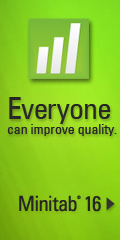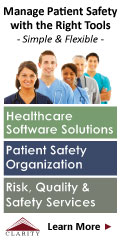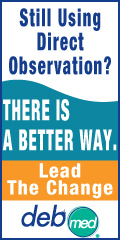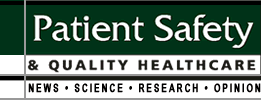 |
 |
 |

March / April 2007

The Role of Enterprise Staffing and Scheduling in Quality Assurance
By Robert E. Blake, RN, MS, MBA, MDiv
Memorial Hermann Health System in Houston, Texas, includes 10 acute care hospitals with more than 3,000 licensed beds. The medical staff totals more than 5,300 physicians, and the system's workforce consists of 18,000 employees. Like all large health systems across the country, Memorial Hermann faces the challenge of finding creative solutions to the cost and quality problems stemming from the nationwide nursing shortage. For Memorial Hermann, excessive utilization of outside agency staff was one such problem. It was a cost issue because by 1999 outside nursing agency staffing averaged approximately 60,000 registered nurse hours per month, at a monthly cost of $2.4 million. It was a quality concern because external staffing agencies do not consistently evaluate nurses' backgrounds and skills. Moreover, outside agency nurses vary in their understanding of Memorial Hermann patient care policies and procedures.
Memorial Hermann solved this problem in 2000 by creating Premier Staffing, our own internal staffing agency (Blake, 2006). With a field staff of 1,200 supplemental employees, who are available to provide coverage on an as-needed basis, Premier Staffing operates 24/7 to supply staffing to all Memorial Hermann facilities. We perform rigorous pre-employment testing and conduct comprehensive orientation and training. Thus, when Premier Staffing schedules a supplemental nurse, unit managers in our facilities are confident that we have sent them an appropriately credentialed, licensed, and trained health professional who knows Memorial Hermann policies and understands our standards of care. The results? Memorial Hermann has reduced the use of outside agency nurses and other allied health professionals by 75%, and net system-wide savings now average $1.04 million per month.
Implementation of an enterprise-wide, Windows-based client/server software system for staffing and scheduling has proven to be a critical success factor. Memorial Hermann has around 500 licensed application users. With all the hospitals using one staffing and scheduling system and sharing a common, unified database, Premier Staffing can stay on top of open shifts and staffing needs across the entire system 24/7.
The data resulting from the application of staffing and scheduling software is a strategic asset that identifies opportunities to improve the efficiency and effectiveness of resource utilization and to present these opportunities to senior-level hospital directors and executives (Paul, 2006). In addition, Memorial Hermann has found that analysis of this data is a vital resource for internal quality assurance and the Joint Commission on Accreditation of Healthcare Organizations (JCAHO) survey process.
New Visions-Shared Pathways
Under the New Visions-Shared Pathways review process, JCAHO surveyors choose "tracers" and follow specific cases for selected patients over the 3- to 4-day survey period. Tracers may be patient-oriented or system-oriented, depending on the particular process selected for review. The tracer methodology (Halvorsen 2004) is the primary means by which JCAHO surveyors determine if a hospital is following its own policies and procedures and meeting national standards. By following a patient as care is delivered between departments and across service lines, the JCAHO team interacts with caregivers all along the way. The number of tracers depends on the hospital's scope of services, organizational complexity, the length of the survey and the number of surveyors participating.
Some tracers focus on the management of human resources. For example, facilities are required to provide an adequate number of staff; provide competent staff; orient, train, and educate staff; and assess, maintain, and improve staff competence. High on the list of potential problems for a hospital is the use of agency staffing personnel who are not employees of the hospital. These are the individuals least likely to know the policies and procedures of a hospital and place the hospital at-risk for a mediocre accreditation survey result. Data from the application of enterprise software during day-to-day staffing and scheduling provides information for evaluation of tracers.
Data Reporting Examples
Using our enterprise-wide staffing and scheduling system, Memorial Hermann is able to track the number of employees working in a specific area during any time period. By building interfaces to other key software programs (such as the general ledger, admission/discharge/transfer system, and our time and attendance software), the number of staff can be compared to the number of patients on the unit. In this way, Memorial Hermann can establish a standard of care, defined as the number of patients cared for per individual caregiver, and monitor this standard in real time. When variances in patient care are discovered, Memorial Hermann can review staffing patterns down to the individual practitioner for possible answers to the variance. In other words, the data help us manage staff-to-patient ratios in real time and to demonstrate compliance with staffing ratio standards, whether for purposes of internal quality assurance or JCAHO accreditation surveys.
Figure 1 shows the actual staffing report for a unit for a specific date on the calendar. As shown, drop-down menus display key information about each employee present on this schedule. Figure 2 (Group Analysis Report) shows productivity information and brings together hours worked, patient volumes, costs, and so on to assess productivity for a patient care area. These two reports give a manager the information necessary to determine whether adequate numbers of staff were or were not available to care for the needs of the patient population served.


|
 |
 |
 |


















|
 |

